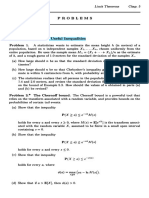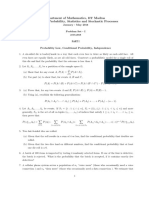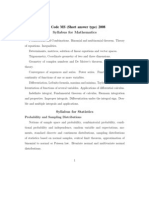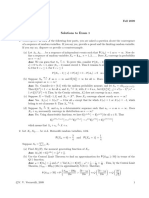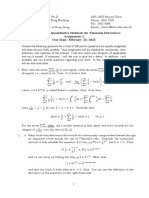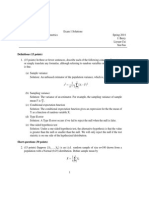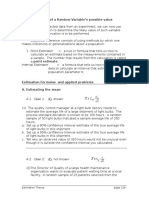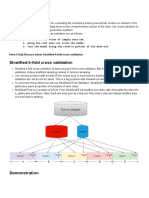0% found this document useful (0 votes)
52 views11 pagesProblem Set4
The document outlines a problem set consisting of various statistical and probability problems, including estimation of means, application of Chebyshev's inequality, and convergence of random variables. It covers topics such as convex functions, Chernoff bounds, and Bayesian estimation, with specific scenarios like estimating the fraction of smokers and analyzing biased coins. Each problem requires analytical solutions and derivations based on the principles of probability and statistics.
Uploaded by
turitoyupptv58Copyright
© © All Rights Reserved
We take content rights seriously. If you suspect this is your content, claim it here.
Available Formats
Download as PDF, TXT or read online on Scribd
0% found this document useful (0 votes)
52 views11 pagesProblem Set4
The document outlines a problem set consisting of various statistical and probability problems, including estimation of means, application of Chebyshev's inequality, and convergence of random variables. It covers topics such as convex functions, Chernoff bounds, and Bayesian estimation, with specific scenarios like estimating the fraction of smokers and analyzing biased coins. Each problem requires analytical solutions and derivations based on the principles of probability and statistics.
Uploaded by
turitoyupptv58Copyright
© © All Rights Reserved
We take content rights seriously. If you suspect this is your content, claim it here.
Available Formats
Download as PDF, TXT or read online on Scribd
/ 11
















